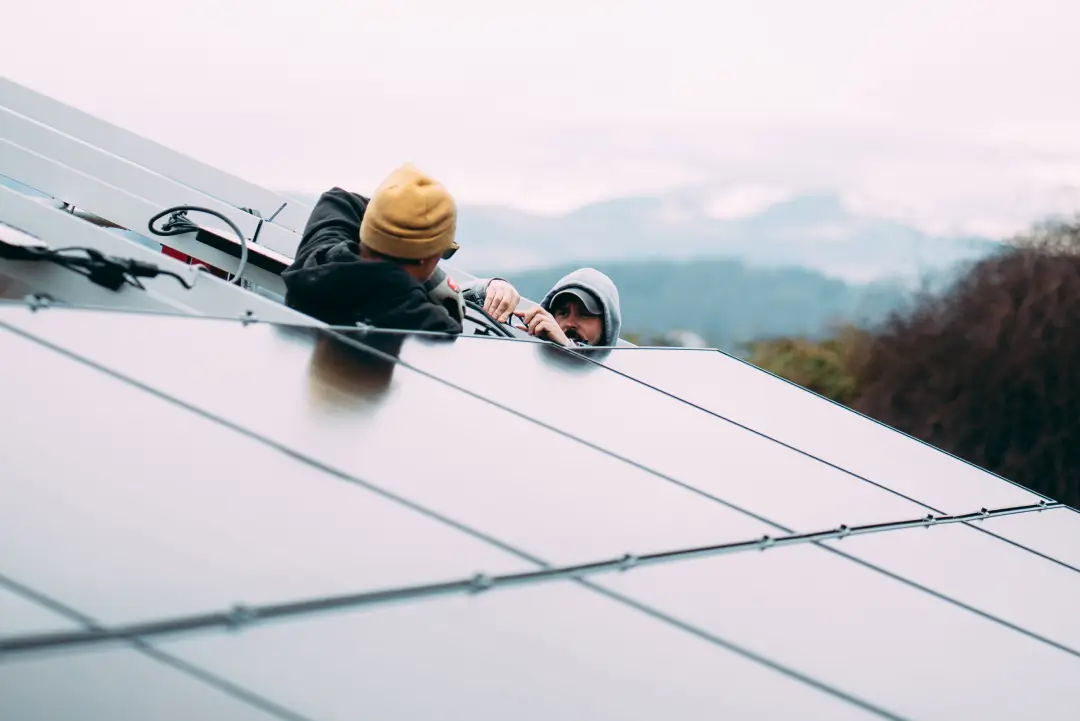Like your car’s windshield, solar panels are exposed to the elements. Unfortunately, that means that dirt, dust, and debris can accumulate without regular maintenance, making them less efficient. You’ll want to keep them clean to ensure that doesn’t happen, but you need to know the proper tools and procedures to avoid damaging your panels. If you’re looking to scrub down your system, here’s everything you need to know about solar panel cleaning, from what to use to how often.
Do Solar Panels Really Need to Be Cleaned?
Yes, but only occasionally. Solar panels are designed to operate efficiently with minimal maintenance, but grime can accumulate over time. According to the National Renewable Energy Laboratory, this dirt creates a film that blocks sunlight, potentially reducing energy output by up to 20% in heavily soiled conditions. Regular cleaning helps maximize your panels’ efficiency and longevity.
Consult our other guide for more information about solar panel maintenance.
How Often Should Solar PV Panels Be Cleaned?
The frequency at which you should clean solar panels depends on your location and environment. Panels in areas with high dust, pollen, bird activity, or industrial pollution may need cleaning every 4-6 months. Cleaning once a year is sufficient in less dusty or rainy areas. Many homeowners find spring and fall ideal for cleaning, as they coincide with seasonal maintenance routines.
Does Rain Clean Solar Panels?
Rain helps clean solar panels, but it’s not a complete solution. While rain can rinse off loose dirt and dust, it won’t remove stubborn grime, bird droppings, or pollen build-up. Think of it like washing your car: rain provides a rinse but rarely leaves things spotless. The Energy Star cleaning guide explains how rain can assist but not replace manual cleaning.
Is It Okay to Power Wash Solar Panels?
No, power washing solar panels is not recommended. The high-pressure water can damage the delicate surface of solar panels, including seals and coatings. Instead, use a garden hose with a gentle spray attachment to rinse panels, followed by a soft sponge for stubborn spots.
How to Remove Haze From Solar Panels
Haze can develop from hard water deposits, pollution, or other contaminants. To tackle this:
- Rinse: Use a garden hose with deionized water, if possible, to avoid leaving mineral deposits.
- Clean: Apply a mixture of water and a small amount of non-abrasive soap with a soft sponge.
- Rinse Again: Wash off any soap residue with deionized water.
- Dry: Use a squeegee or lint-free cloth to prevent streaking.
For stubborn haze, consult your solar panel manufacturer for recommended cleaning agents or coatings.
Do I Need to Turn Off Solar Panels Before Cleaning?
Yes, safety first! Solar panels produce electricity as long as they are exposed to sunlight. Follow the manufacturer’s guidelines or consult your installer to turn off the system. This reduces the risk of electrical shock during cleaning.
Cleaning your solar panels may not be glamorous, but it’s an essential step in protecting your investment. A little TLC goes a long way toward ensuring your panels stay efficient and last for decades.
The Importance of Keeping Solar Panels Clean
Cleaning solar panels is crucial for maximizing energy output. Dust, leaves, and grime obstruct sunlight, reducing efficiency and energy production. Even a slight obstruction can lead to a notable drop in performance.
Moreover, well-maintained panels can extend the system’s lifespan. Clean panels also prevent the buildup of substances that could cause long-term damage or require costly repairs. Regular maintenance enhances your solar investment’s immediate efficiency and overall durability.
Preparing for Solar Panel Cleaning
Before you begin cleaning, inspect your solar panels for any visible damage. Look for cracks or loose wires, which might require professional attention. Next, choose a time when the panels are incredible, typically early morning or late afternoon. Gather the necessary cleaning tools and materials. A soft brush or microfiber cloth works well to avoid scratching. Distilled water should also be considered to prevent mineral deposits. Proper preparation helps achieve effective and safe cleaning results.
Safety First: Precautions Before You Start
Safety is paramount when cleaning solar panels. To prevent electrical hazards, begin by powering down the solar system. This simple step can prevent accidents and protect you and your equipment. Additionally, wear appropriate safety gear, such as gloves and non-slip shoes, especially if you’re working at height. If you need a ladder, ensure it is stable and positioned on even ground. Always prioritize your safety over speed to ensure a smooth cleaning process without unnecessary risks. Check out the Energy.gov step-by-step maintenance guide for more safety tips.
Step-by-Step Guide to Cleaning Solar Panels
Cleaning solar panels on a flat surface can be straightforward if done correctly. Choose an overcast day to prevent water from evaporating too quickly, ensuring a more effective cleaning process. Start gently removing loose debris like leaves or dirt using a soft brush or squeegee. Avoid using metal tools as they can scratch the glass. A gentle approach helps preserve the panel surface without causing damage.
Next, prepare a mild soap solution using non-abrasive cleaners mixed with water. Apply the solution with a soft sponge, ensuring it spreads evenly across the entire panel surface. Work carefully to avoid leaving any residue that might reduce panel efficiency.
Finally, rinse the solar panels with clean, distilled water to remove all soap traces. Use a hose with a gentle stream to avoid applying excessive pressure. A thorough rinse ensures the panels remain spotless and free from streaks that could hinder sunlight absorption.
Special Techniques for Cleaning Solar Panels on a Pitched Roof
Cleaning solar panels on a pitched roof requires extra care to ensure safety. Given the height and angle of the roof, always use a stable ladder with a harness when accessing the roof. Safety precautions are paramount. If working at such heights feels daunting, consider using a hose with an extendable handle. This tool allows you to clean from the ground while staying safe. Ensure the hose has a soft-bristle attachment to gently clean the panels without causing scratches.
Another option is using a water-fed pole system. This tool offers more control while cleaning at a distance. Hiring experts can be a wise investment for those more comfortable with professional assistance. They have the equipment and experience to handle pitched roofs safely and effectively.
Choosing the Right Tools and Materials
Selecting the right tools and materials is crucial for effective solar panel cleaning. The wrong materials can damage the panels, reducing their efficiency. Investing in professional services can boost panel efficiency and longevity. Additionally, it eliminates the guesswork, offering peace of mind with tailored solutions.
Maintaining Your Solar Panels Between Cleanings
Consistent maintenance, beyond regular cleaning, can enhance solar panel efficient. Keeping panels free from shadows is crucial to optimizing sunlight exposure. Trim nearby trees and bushes regularly to prevent shading. Inspect your solar panels periodically for dirt accumulation or unusual wear. Address minor issues quickly to avoid long-term damage. Additionally, check that mounting structures remain secure, as loose fittings can affect performance.
If you have more questions or want to learn about going solar, contact Purelight Power.




